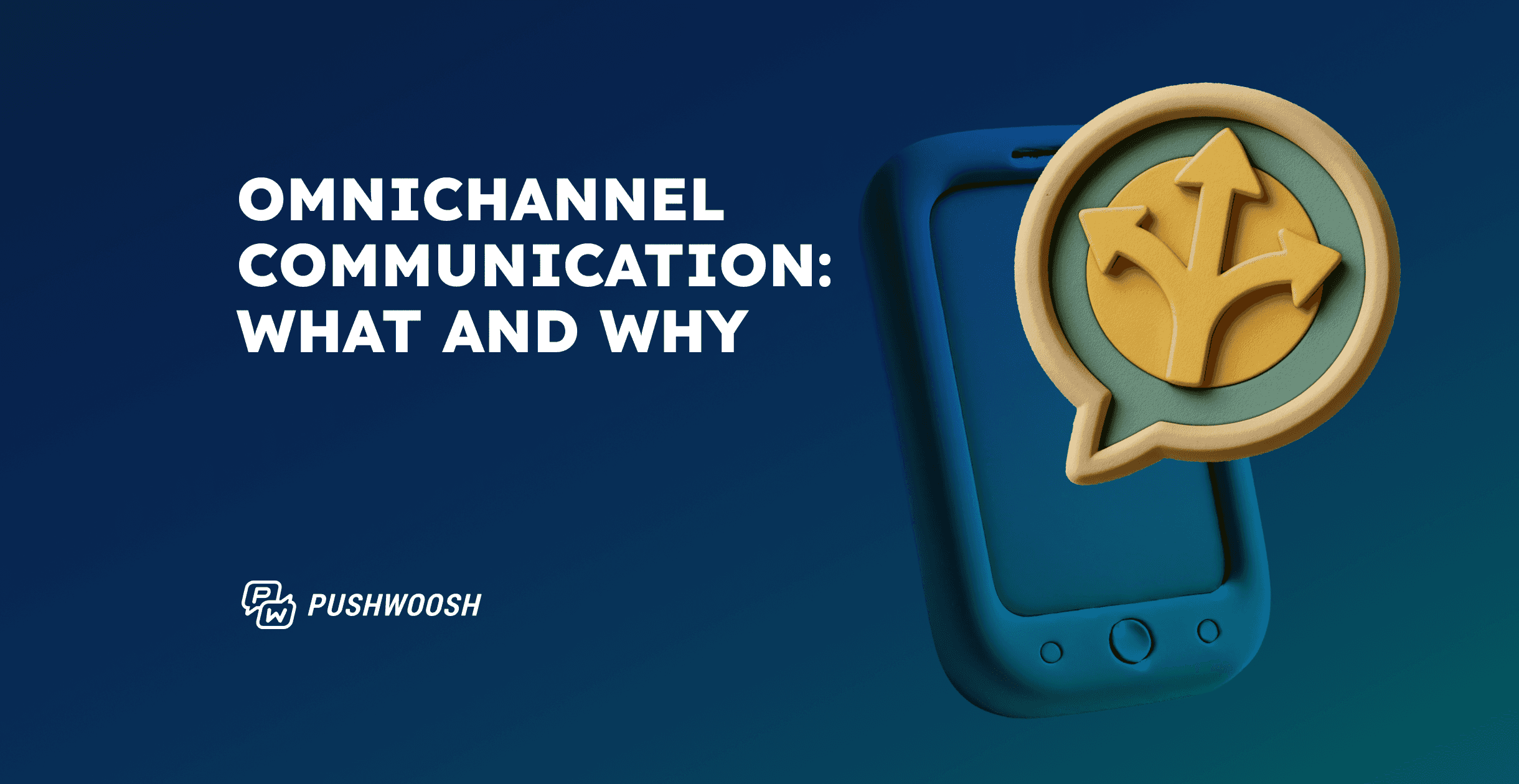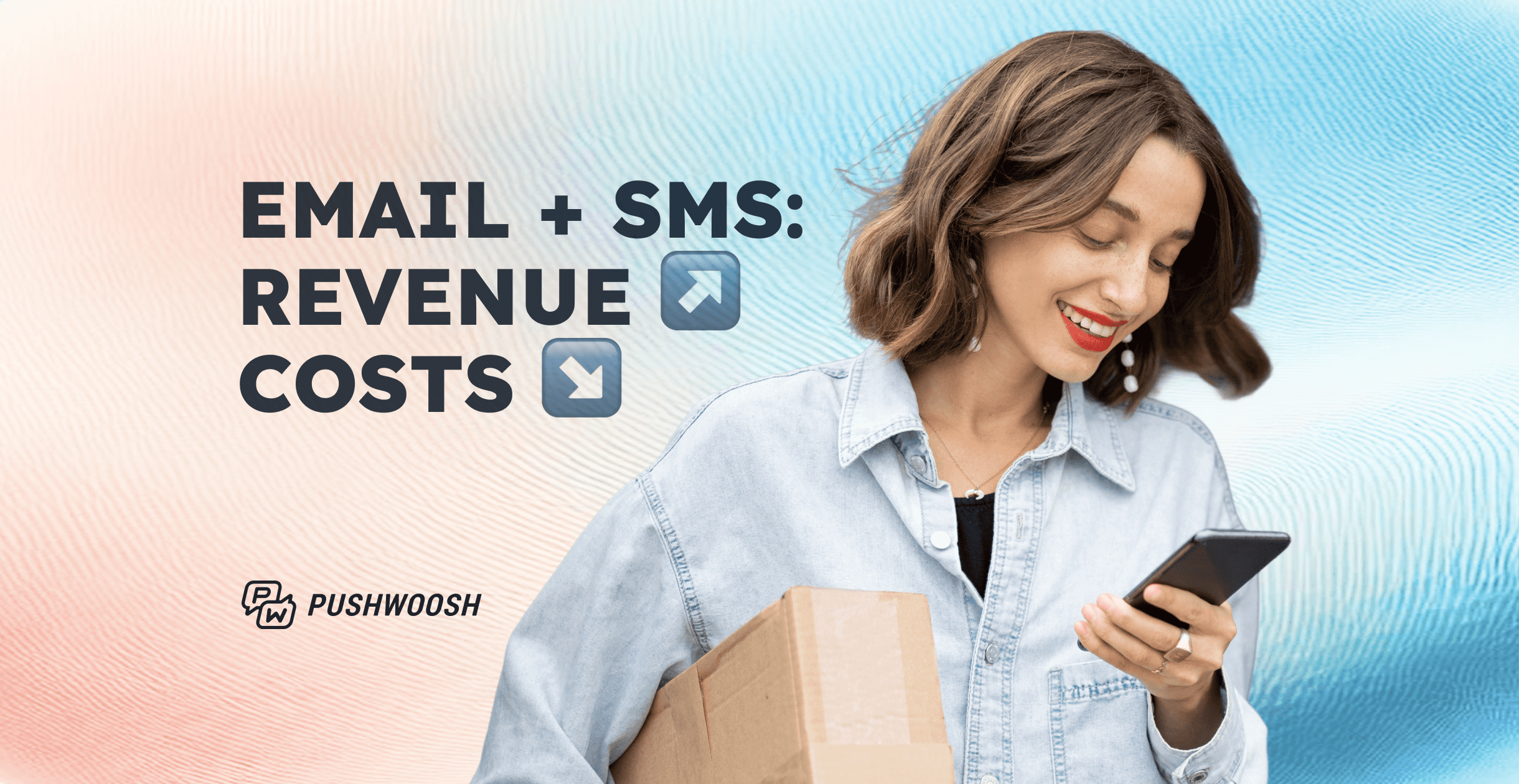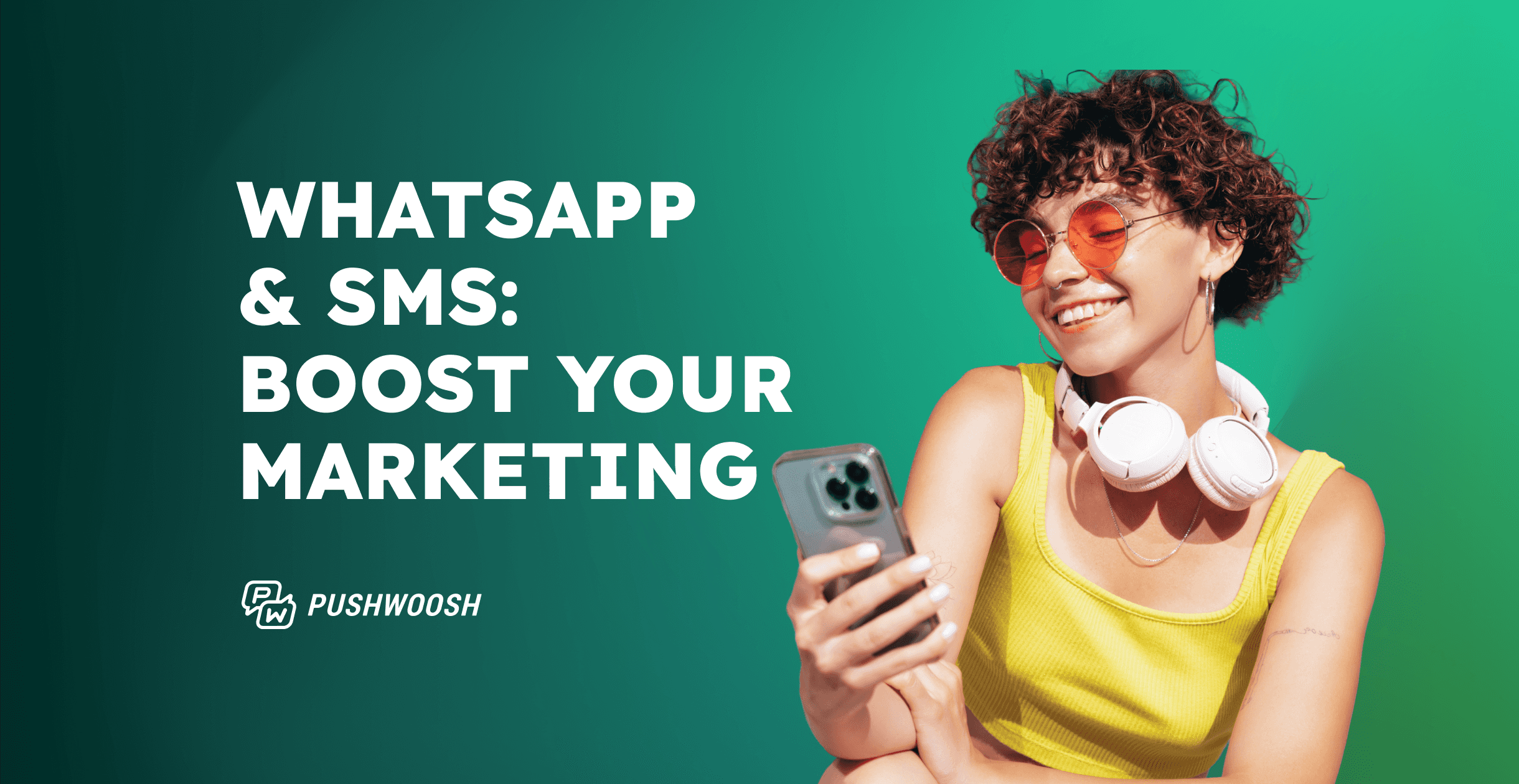Omnichannel сommunication: A winning strategy for customer-centric brands
Customers interact with businesses across various channels, from websites and mobile apps to email and social media. To provide a seamless and engaging experience, companies opt for an omnichannel communication strategy.
This approach goes beyond simply being present on multiple channels. It focuses on delivering a consistent experience wherever customers engage with your brand. In this article, we’ll show you how to do just that — by unifying your data, building smart customer journeys, and applying personalization across every touchpoint.
What is omnichannel communication?
Omnichannel communication is a customer-centric approach that delivers personalized experiences across all channels throughout a customer lifecycle. It’s about orchestrating a unified brand experience via a context-aware messaging, from onboarding to post-purchase follow-up.
Why is omnichannel communication important?
🎯Improved customer satisfaction
Customers are willing to pay more for a great customer experience, and omnichannel helps deliver that by ensuring smooth transitions between channels and personalized interactions.
🎯Increased user engagement
By reaching customers on their preferred channels with relevant messages, businesses can foster deeper engagement and build stronger relationships.
🎯Increased ROI
Omnichannel strategies can optimize marketing spend by identifying the most effective channels and reducing customer churn, ultimately driving higher returns.
🎯Higher-value conversions
Personalized omnichannel campaigns, triggered by customer behavior, lead to higher conversion rates among high-value users.
An omnichannel strategy assures that your customers can be confident that you’ll deliver what they need, when they need it, and engage with them on the channels they’d prefer. This sort of engagement is critical to both earning new customers and retaining customers long-term.
Omnichannel communication vs. multichannel marketing
| Omnichannel Communication | Multichannel Marketing | |
|---|---|---|
| Focus | Customer-centric, personalized experiences across all channels | Reaching customers on multiple channels |
| Messaging | Consistent and relevant across all touchpoints | Often inconsistent and siloed |
| Integration | Seamless integration of all channels | Limited integration between channels |
| Goal | Deliver a unified brand experience and build customer relationships | Drive conversions and generate leads |
Omnichannel strategy through a customer engagement platform
Orchestrating customer journeys across various channels is more effective via Customer Engagement Platforms (CEPs) or omnichannel platforms. Here’s how to build a winning omnichannel strategy via such platforms.
1. Unify all communication channels in one place:
✅ Create and automate campaigns across push notifications, in-app messages, email, SMS, WhatsApp, and other channels.
✅ Use workflow builder to design customer journeys that trigger messages based user actions within your app or website.
✅ Combine channels strategically considering the customer’s lifecycle stage and user preferences.
✅ Ensure that your messaging is consistent and cohesive across all channels, providing a seamless customer experience.
Take this scenario: a push notification nudges users to complete a purchase. Once they convert, an email follows up — confirming the order or suggesting complementary products. This messaging flow delivers more value by expanding touchpoints and increasing the chances of repeat purchases:

What if a user clicks a push notification but doesn’t engage with the follow-up email? You can take the journey further — send a WhatsApp or SMS message instead, delay the next communication, or trigger an entirely different path. Every interaction can serve as a decision point to shape what happens next.
You can also use A/B/n testing to compare different sequences and channels combinations and optimize accordingly.
It starts with mapping the customer journey down to each individual touchpoint and then using this lens to understand how to best combine the data and insights you observe to architect — and ultimately automate — an experience that feels simple and seamless.
2. Unify customer data:
✅ Make sure your CEP also functions as a Customer Data Platform (CDP), bringing together data from various sources and communication channels.
✅ Collect data from various sources, including your CRM, analytics platforms, and marketing tools.
✅ Create unified customer profiles, providing a complete view of their interactions with your brand.
✅ Use this data to personalize your communication and tailor your messages to user profiles and preferences.
For omnichannel communication, it is key to bring together customer data from various sources and channels into comprehensive user profiles. This unified approach helps reduce message overlap, avoid inconsistencies, and eliminate the chaos that often comes with fragmented channel management.
For example, Pushwoosh combines push tokens, email addresses, and phone numbers under one user ID, allowing marketers to maintain a clear, user-centric view. The result? Campaigns that feel seamless and personalized.
Customers don’t want to feel like they’re interacting with a different brand every time they interact via a different channel; they expect the same information and a similar experience, whether they call a company, use their app, or visit the website.
3. Segment your audience for personalized messaging:
✅ Divide your audience into segments based on demographics, behavior, purchase history, and other relevant criteria.
✅ Create targeted messaging for each segment, ensuring that your communication is relevant and engaging.
✅ Use segmentation tools to automate this process and deliver the right message to the right people at the right time.
For example, if a user browses a product in your app, you can instantly place them in a high-intent segment and follow up via one channel. If there’s no response, you can send a reminder the next day via another channel, without simply repeating the same message, but building on the previous touchpoint.
Apply pre-created segments across all channels in your campaigns — or fine-tune your targeting in the course of the flow (In Pushwoosh, you can do both). This allows you to direct specific segments to different messaging branches, ensuring each user only receives the messages relevant to them.
Personalization should be intrinsic to, truly integrated into, an organic part of the whole user journey. It should blend in with the overall app experience so that the user can voluntarily engage with and be part of the story.
The key is personalization based on segmentation, which is only possible with a deep understanding of your users’ behavior. Users want to read what’s relevant to them.
4. Analyze and optimize your omnichannel communications:
✅ Track key metrics — opt-in rates, click-through rates, and conversion rates — to measure the performance of your campaigns.
✅ Use analytics dashboards to gain insights into customer behavior and identify areas for improvement.
✅ Continuously optimize your campaigns based on data-driven insights to achieve better results and maximize ROI.
In Pushwoosh, each communication channel shows its performance metrics inside a campaign in real time, while centralized dashboards provide a high-level overview of channel performance.
This data-driven approach allows you to stay agile and continuously improve your omnichannel communications based on what works best.
Use cases: Omnichannel communication across industries
Understanding the what and why of omnichannel is essential. This section focuses on how a truly integrated communication strategy translates into real-world applications for businesses across diverse industries.
👜E-commerce
Brands can help consumers make the best purchase decisions by informing them about the products and best deals — for this reason, omnichannel messaging has become a powerful tool to boost online sales.
You can prompt shoppers to complete their order, inspire them to explore complementary products, or tempt them with an upgrade. And the best part? You can do it all automatically.
• First-time conversions & repeat purchases. When a user opens the app for the first time or returns after a successful purchase, you can automatically greet them with a personalized offer. Show in-app messages with relevant product offers (based on advanced user segmentation, of course!) when your users are the most engaged — meaning, when they are inside the app!
• Abandoned cart recovery. When a user adds a product to their cart but doesn’t complete the purchase, they’ll automatically receive a reminder about their pending order. If they still hesitate, you can give them a gentle nudge — send a push notification or email with a special promo code to reignite their interest and drive the conversion:
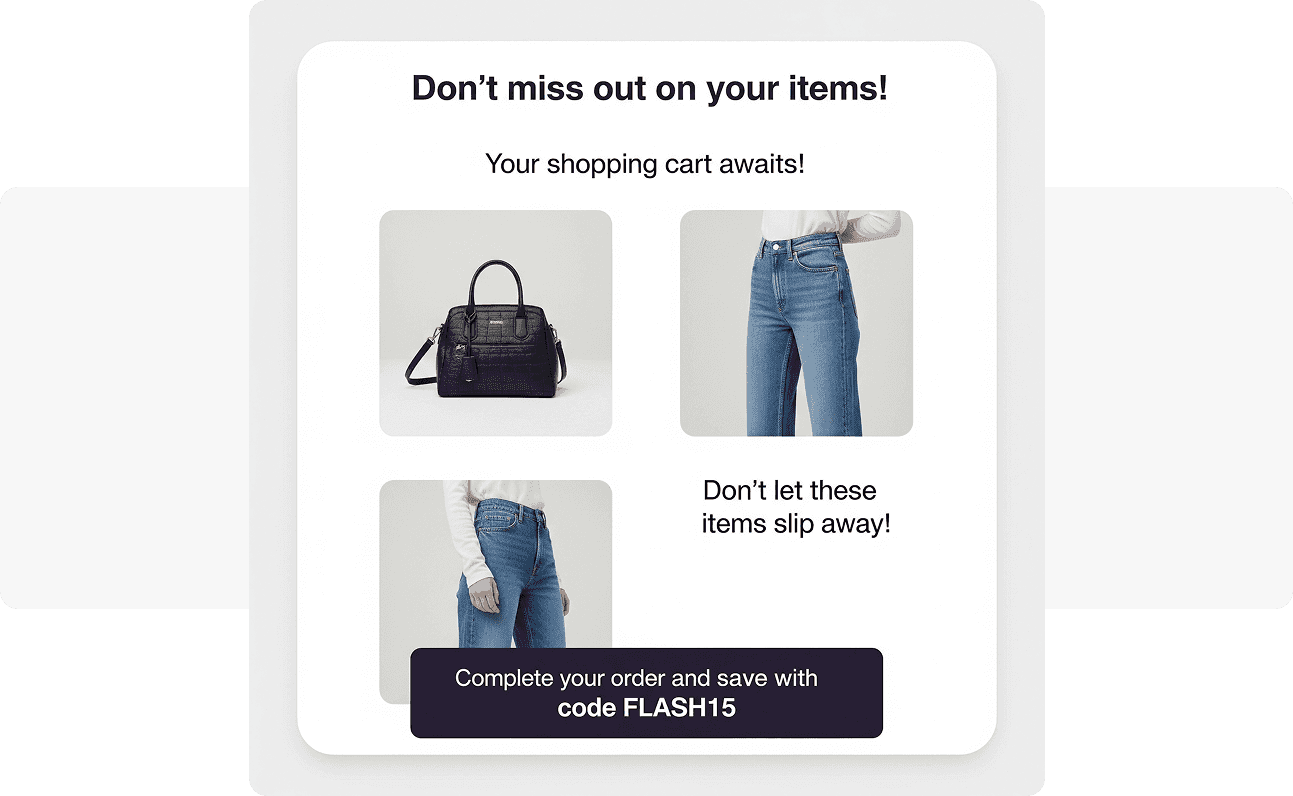
• Increasing Lifetime Value (LTV). Identify your most loyal customers and reward them with exclusive promo codes and special offers. For more personal connection, follow up with targeted WhatsApp messaging featuring promotions, new collections, and interactive AI chatbots to help customers find and pick the perfect products.
When it comes to omnichannel communications, in order to increase sales, consider your user journey in the first instance and then tie relevant communications together in a seamless fashion to ensure cross-channel experience is cohesive.
🧘♀️Fitness & healthcare
When it comes to helping users improve their wellness and encouraging healthy lifestyle habits, customer experience must be impeccable.
• Successful onboarding. Whether it’s a fitness guide or a healthcare service, your app’s onboarding sets the tone for the entire user experience.
For a healthcare app, a welcoming series could begin with an email introducing key features, followed by in-app messages demonstrating how to book an appointment or access medical records.
Fitness apps can use push notifications to highlight new workout plans and email a weekly progress report, gently educating users and boosting their confidence in using the platform.
• Personalized health reminders: For fitness apps, this translates to push notifications reminding users about their scheduled workout or an in-app message celebrating a new fitness streak.
In healthcare, it could be an automated SMS reminder for an upcoming doctor’s appointment or an email with pre-visit instructions:
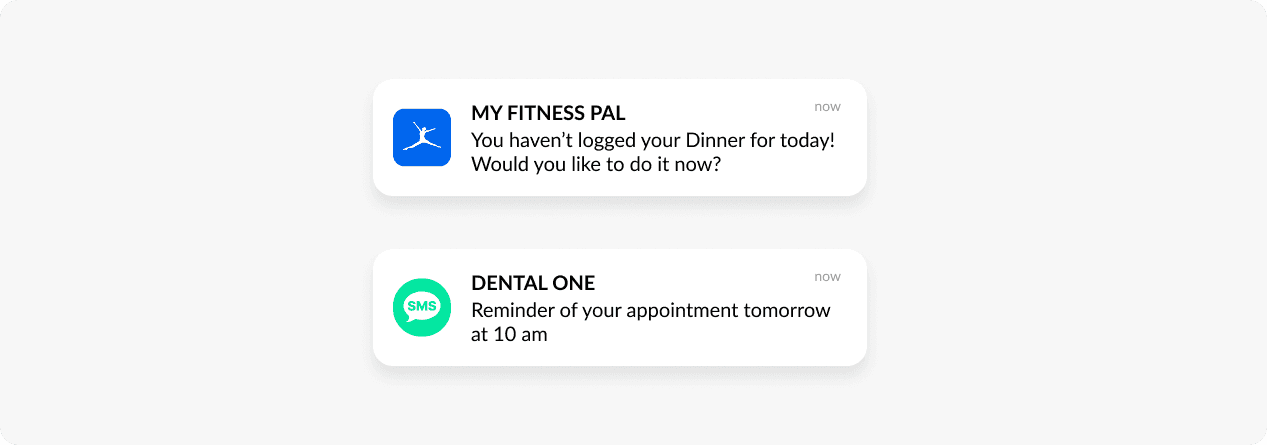
• Engagement and retention. An omnichannel strategy allows a fitness app to celebrate a user’s personal best with a push notification, followed by an in-app message offering tips for continued progress. Meanwhile, a healthcare provider can support users with personalized educational content delivered via email.
The result? Consistent, value-driven communication that fuels engagement, encourages healthier habits, and deepens the bond between users and your brand.
It’s essential to personalize the user experience and provide immediate value to the user from the start.
If you’re offering a 7-day trial and you want that user to convert into a paid subscriber at the end of those 7 days, make sure you’re providing fresh content that you know interests them.
☎️Telecom
• From onboarding to upsell. Omnichannel messaging in telecom is key to smoothly guiding new customers, for example, sending a welcome email with account details, followed by an in-app message to activate initial services. For existing clients, it means retaining them with irresistible special offers via in-app messages:
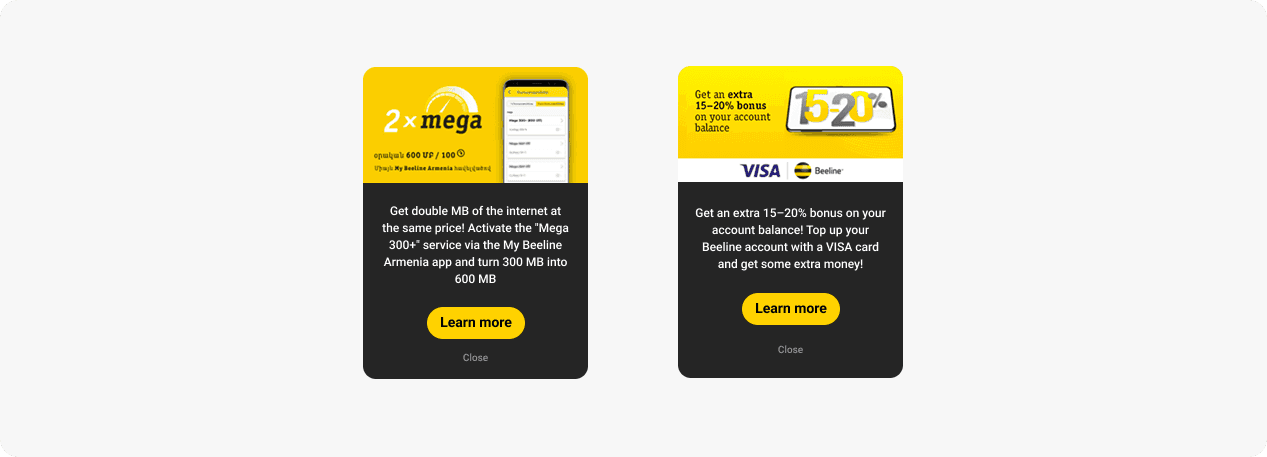
• Transactional and service communications. Companies can leverage emails and mobile messaging for critical transactional communications, such as reminding clients of bills to pay or communicating time-sensitive information like submission statuses, temporary service issues, or upcoming outages.
Real-world wins: How brands are crushing it with omnichannel
These use cases are not just theoretical; they are being implemented by leading brands around the globe with impressive results. Pushwoosh has partnered with many businesses to help them achieve their omnichannel goals. Let’s look at these inspiring success stories.
🍕Food delivery service: boosting AOV with pushes and in-apps
HungryNaki, Bangladesh’s first food delivery brand, faced the challenge of sustaining its rapid growth, which began during the pandemic. To do this, they implemented an omnichannel strategy, using mobile messaging on a large scale. This was supported by precise audience segmentation and granular personalization.
Campaigns featured push notifications and in-app messages enticing users to explore new cuisines and restaurants, all tailored to their tastes and order history. These efforts led to increased conversion rates, a boost in Average Order Value (AOV), and improved customer retention, ultimately cultivating the app’s user base into a community of high-value customers.
👉Dive into HungryNaki’s success story.
📈Trading company: boosting customer conversion with omnichannel engagement
AvaTrade, an international online broker serving millions, sought to effectively engage and convert its vast audience across a mobile app and 30 web sites. They implemented a centralized omnichannel communication strategy, orchestrating web and app push notifications alongside in-app messages.
This approach, powered by behavior-based segmentation and dynamic personalization, drove conversion to key actions, such as real account registration and participating in educational webinars. Ultimately, these strategic efforts delivered a substantial uplift in engagement and other critical metrics.
👉Dive into AvaTrade’s success story.
Ready to repeat the success of these companies and elevate your omnichannel communications strategy?








